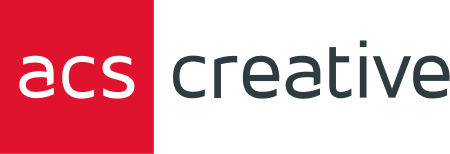What exactly is Section 508 Compliance, and why should I care?
Section 508 compliance is a set of guidelines and standards established by the Federal government to ensure that electronic and information technology (EIT) products are accessible to people with disabilities.
The guidelines were created to ensure that people with disabilities, including those with visual, auditory, motor, and cognitive impairments, have equal access to information and technology. Section 508 compliance is important for a number of reasons:
- Accessibility: Section 508 compliance ensures that websites, digital documents, and other electronic and information technology (EIT) products are accessible to people with disabilities, including those with visual, auditory, motor, and cognitive impairments.
- Legal Compliance: Section 508 is a federal law that requires all federal agencies to make their electronic and information technology accessible to people with disabilities. If your organization receives federal funding or contracts, you may be required to comply with Section 508.
- Inclusiveness: Making your technology products accessible to people with disabilities promotes inclusiveness and creates a better user experience for everyone, not just those with disabilities.
- Improved User Experience: By ensuring that your technology products are accessible, you can make them easier to use for everyone, including those with disabilities. This can improve the overall user experience and increase customer satisfaction.
- Increased Market Reach: By making your technology products accessible, you can reach a wider market, including those with disabilities and those who assist them, such as family members and support staff.
The Section 508 standards are part of the Rehabilitation Act of 1973, which requires federal agencies to make their electronic and information technology accessible to people with disabilities. The standards cover a wide range of technology products, including websites, digital documents, software, hardware, and multimedia.
To meet Section 508 compliance, EIT products must meet specific criteria, such as providing alternative text for images, captioning videos, and ensuring that navigation and functionality can be used with keyboard controls only. The standards also require that products be tested for accessibility and that any issues found be resolved in a timely manner.
Organizations that receive federal funding or contracts may be required to comply with Section 508. In addition, companies and organizations in the private sector may choose to comply with the standards as a way to promote accessibility and inclusiveness, and to reach a wider market, including those with disabilities and those who assist them.
In conclusion, Section 508 compliance is a critical aspect of making technology products accessible to people with disabilities. The guidelines and standards ensure that people with disabilities have equal access to information and technology and that they can participate fully in the digital world.
How does section 508 differ from WCAG 2.0 compliance?
Section 508 and the Web Content Accessibility Guidelines (WCAG) 2.0 are both standards for ensuring that websites and digital information technology products are accessible to people with disabilities. However, there are some key differences between the two:
- Jurisdiction: Section 508 is a federal law that applies to all federal agencies, while WCAG 2.0 is a set of guidelines developed by the World Wide Web Consortium (W3C) and can be adopted by any organization, including those in the private sector.
- Focus: Section 508 primarily focuses on accessibility for people with disabilities who use assistive technology, such as screen readers and magnifiers, while WCAG 2.0 is broader in scope and addresses a wide range of accessibility issues, including accessibility for users with disabilities and users with different devices and browsers.
- Technical Requirements: Section 508 has specific technical requirements for accessibility, such as providing alternative text for images and ensuring that navigation and functionality can be used with keyboard controls only. WCAG 2.0, on the other hand, provides more general guidelines, such as providing descriptive text for links and making sure that pages are usable without requiring a mouse.
- Compliance Levels: WCAG 2.0 has three levels of conformance: A, AA, and AAA. Level A is the minimum requirement, while level AAA represents the highest level of accessibility. Section 508, on the other hand, has a single compliance standard.
In conclusion, while both Section 508 and WCAG 2.0 aim to ensure that technology products are accessible to people with disabilities, they have different scopes and focus on different technical requirements. An organization can choose to comply with both standards for a comprehensive approach to accessibility.

